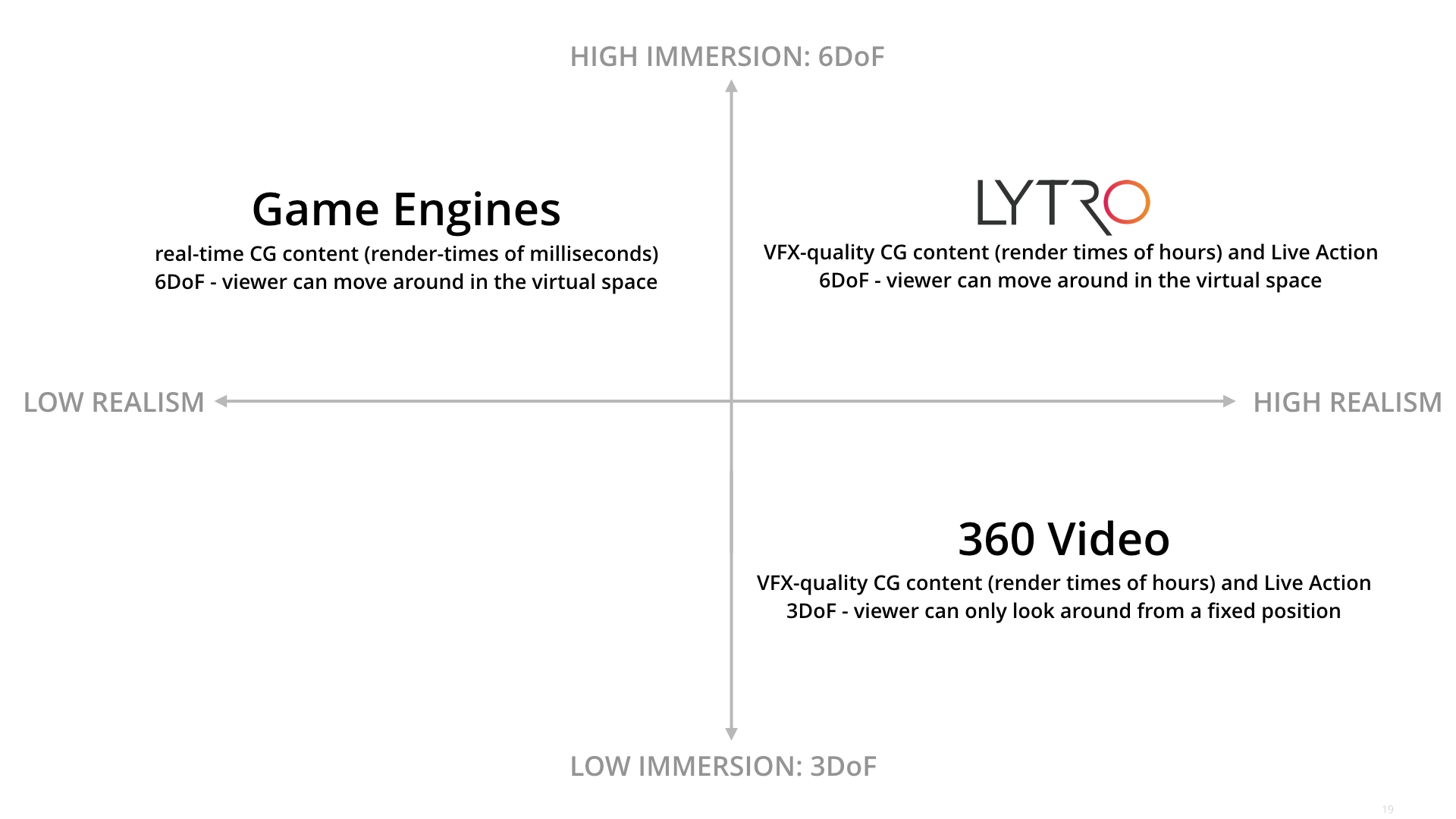A Seminal Day in VR: Announcing “Moon” — blog.lytro.com
Excerpt:
This is a big day for Virtual Reality. Today, Lytro is proud to announce “Moon,” the first ever live-action 6DoF VR experience in history.
To understand why this is a historic day for VR, let’s take a step back and look at the current landscape. Today, there are two kinds of experiences available in VR.
High Immersion (6DoF), Low Realism. The first type of experience is produced using real-time game engines. These experiences are highly immersive – they allow the viewer to move around a virtual space in six degrees of freedom – 6DoF (3 to rotate your head, and 3 to move around in the space). But, the imagery these experiences can show is limited to computer-generated content that renders in just a few milliseconds. Despite advances in real-time game-engine technology, these experiences cannot yet be photorealistic. And of course, they cannot capture the real world.
Low Immersion (3DoF), High Realism. The second type of VR experience available today is 360 video. These experiences are “high realism” – they can show imagery created by filming the real world or by spending tens or hundreds of hours rendering a single computer-generated frame. But, these experiences aren’t “high immersion” because the viewer is stuck to a single point in space – in fact, the viewer is really just watching video projected on a sphere around her head. We call this 3DoF – the viewer has only the 3 degrees of freedom to rotate her head.
Neither of these brings us the “jet-packs and flying cars” future VR has promised. The true promise of VR is to transport us to real and fictional places with full fidelity – to feel like we’re there with all our senses, and to believe that we’re there because of the realism of our new surroundings. This promised future requires BOTH “high realism” AND “high immersion” (6DoF) – a combination that no technology has been capable of. Until now.










